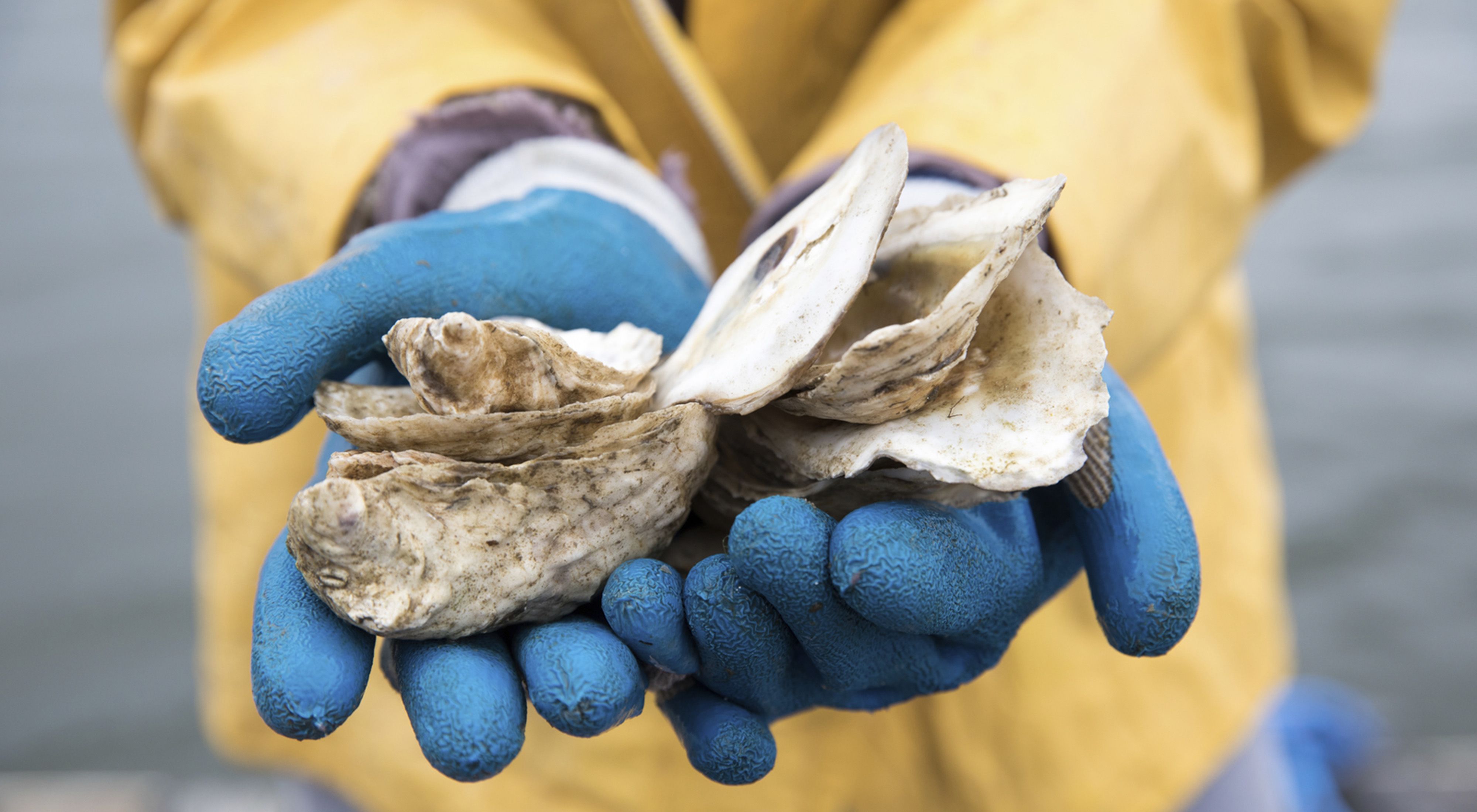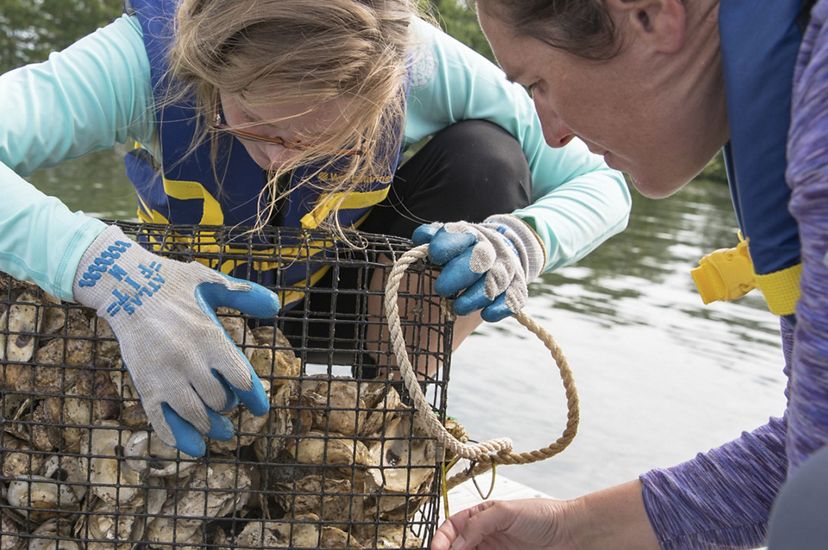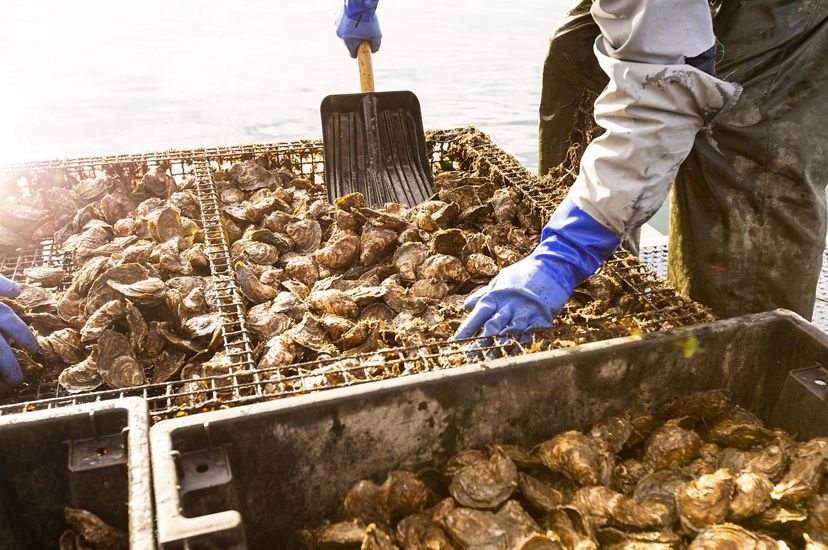The eastern oyster (Crassostrea virginica) has historically played a vital role in the ecology of Great Bay Estuary. As many as 1,000 acres of live oyster reef may have covered the estuary in 1970, but over 90% of oysters were lost due to pollution, harvest, and disease. Without oysters, Great Bay Estuary is lacking the natural filtration capacity to maintain healthy eelgrass beds and fish nurseries as nitrogen and siltation increase. Now with your help, the oysters are making a big comeback.
The Nature Conservancy and The University of New Hampshire, together with other partners, are teaming up to rebuild degraded oyster reef habitat in the Piscataqua Region Estuary of New Hampshire and Maine. Thanks to support from dedicated members like you, the program has successfully restored more than 28 acres of reef and 3.5M oysters to the system since 2009. Oysters are an ecological linchpin of the estuary, providing essential fish habitat and water quality regulation services. In recent years the team has scaled-up efforts, with as much as five acres and 1 million oysters restored annually.
Our approach is rooted in science: our restoration strategy includes a review of past restoration efforts in the estuary and the identification of new sites. We’ll restore oyster reefs, monitor their health over time, and assess these efforts to ensure we’re taking the smartest possible actions together with our partners and communities to improve Great Bay.
From the volunteer oyster conservationists who raise young spat in cages off their docks to the scientists who reconstruct historic reef sites for the juvenile oysters to call home, our approach literally takes a village.

Partnerships
SOAR: Supporting Oyster Aquaculture and Restoration
Helping oyster farmers impacted by COVID-19 and the resulting economic downturn by purchasing surplus oysters and placing them on nearby oyster restoration projects.

Initiative
Oyster Conservation Volunteer Program
Oyster Conservationists are local volunteers helping to improve the health of Great Bay by raising young oysters in the summer and fall. We need you!
Oyster Program Downloads
-

Restoration By Design: The Full Report
PDF
Want to know exactly what goes into restoring oysters in the Great Bay Estuary and its tributaries? Here's the plan and how it works.
DOWNLOAD -
Restoration By Design: The Overview
PDF
Want the Cliff's Notes version? Get to know how and why we restore oysters where we do with this easily digestible overview.
DOWNLOAD -
PDF
Curious about the process of being an Oyster Conservationist? Take a peek at this all-in-one fact sheet detailing the volunteer "life cycle."
DOWNLOAD -
PDF
How are oysters restored to the Great Bay Estuary? It literally takes a village. Here's how it all comes together.
DOWNLOAD -
2023 Oyster Conservationist Program Report
PDF
The American oyster is definitely the most valuable creature in the Great Bay Estuary. But due to pollution, harvest and disease we have lost over 90% of our reefs. Our volunteers are helping to turn the tide. Here's how it's going.
DOWNLOAD
Help Raise Nature's Voice from a Whisper to a Roar
Together we can find creative solutions to tackle our most complex conservation challenges and build a stronger future for people and nature. Will you help us continue this work?






